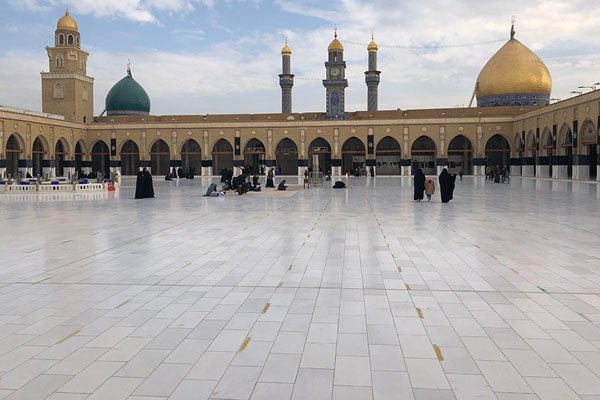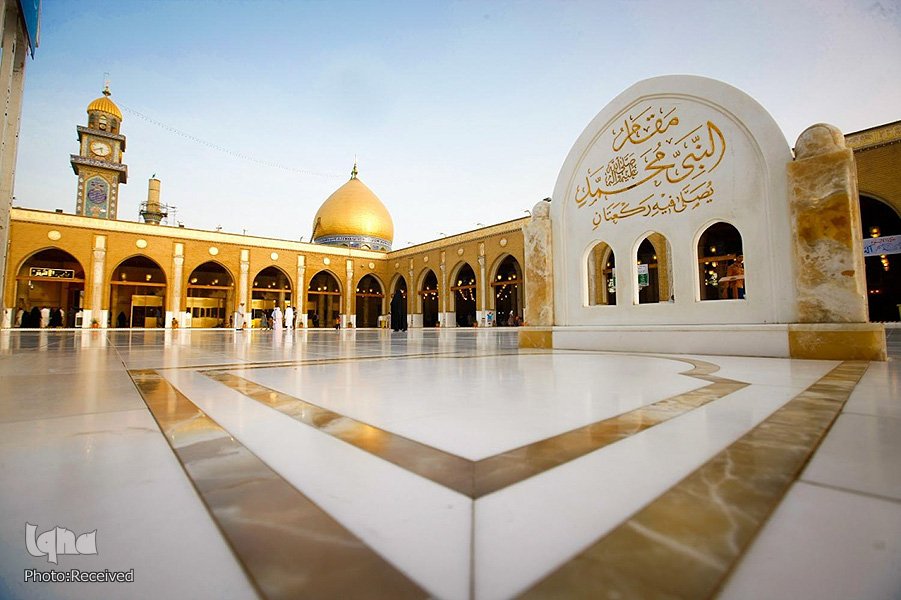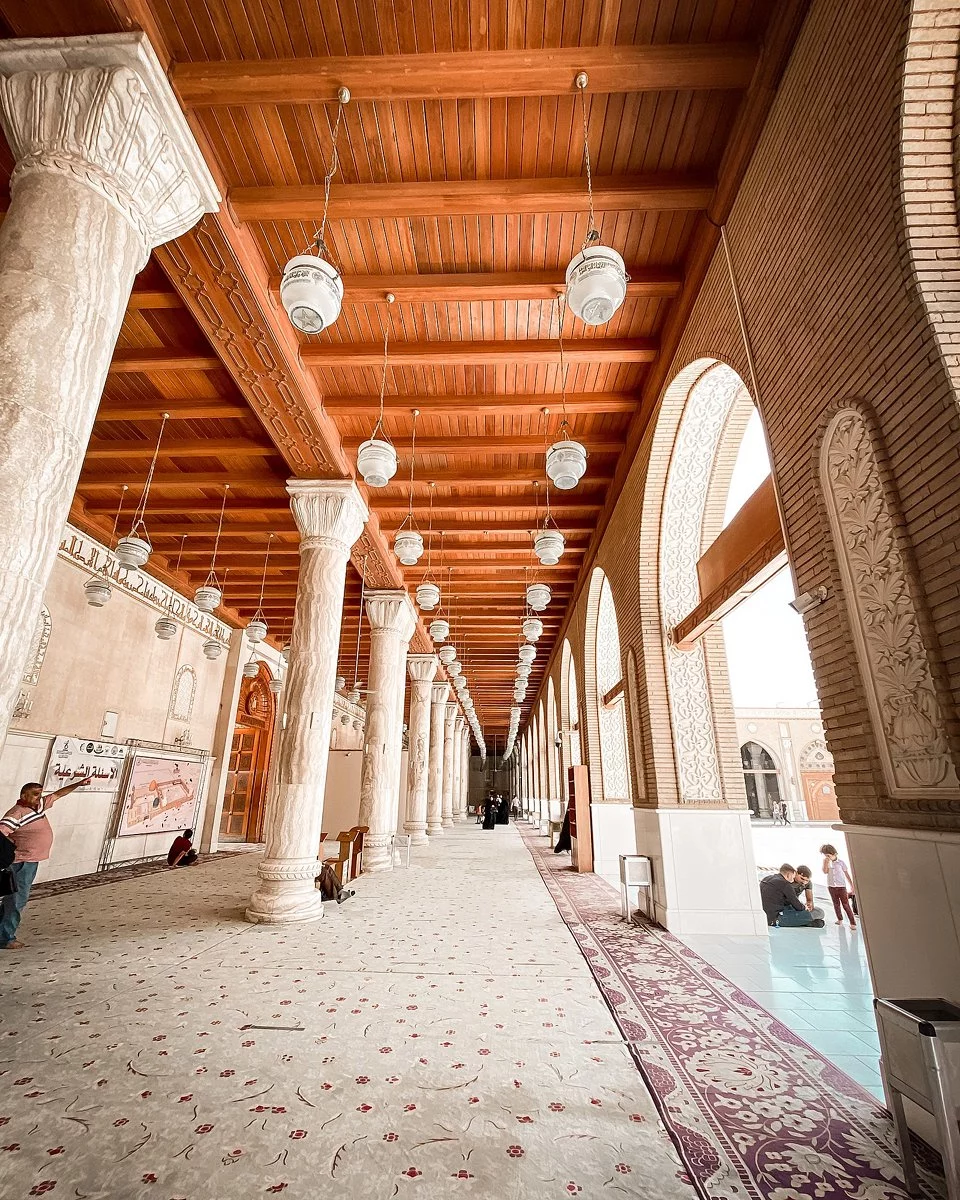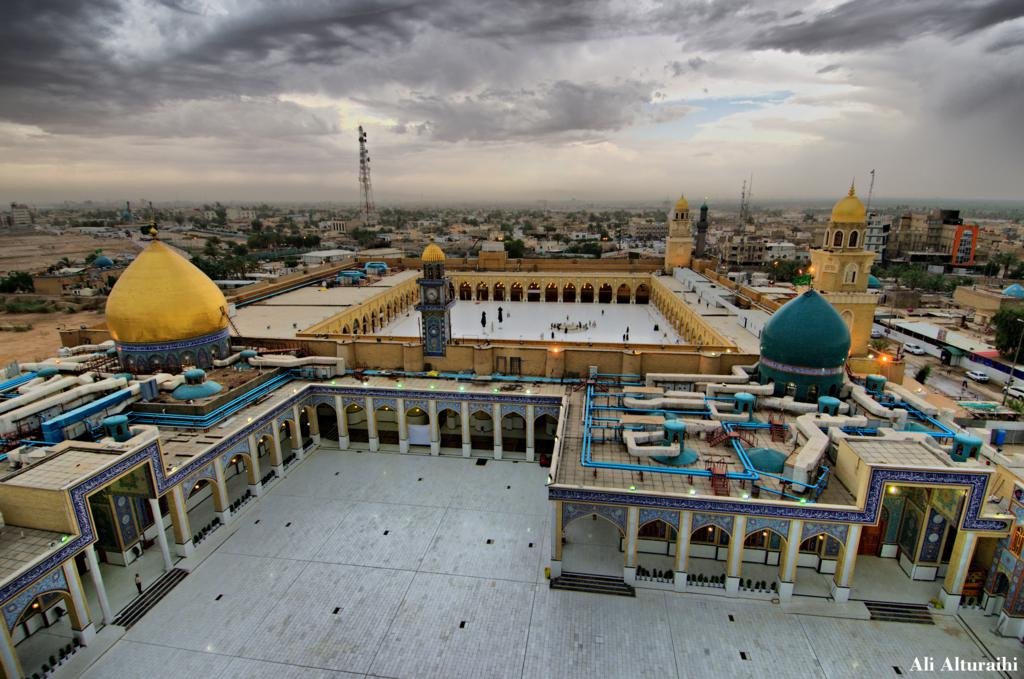Mailing List
Sign up for our mailing list to get latest updates and offers.
The Great Mosque of Kufa, is located in Kufa, Al-Najaf Al-Ashraf Governate, Iraq and is one of the earliest surviving mosques in the world. The mosque, built in the 7th century, was home to Ali ibn Abi Talib, and contains the shrine of Muslim ibn Aqeel, Hani ibn Urwa, and the revolutionary, Al-Mukhtar. According to hadith, the first person who founded the Mosque of Kufa was Prophet Adam (AS). It was reconstructed by Prophet Noah (AS) after the storm. In 17/638, when Muslims first entered Kufa, the mosque was rebuilt together with the governmental building (Dar al-'Imara) at the suggestion of Salman al-Farsi. The mosque has witnessed many prophets (AS), Prophet Muhammad (PBUH), Amir al-Mu'minin (AS), Imam al-Hasan (AS), and Imam al-Husayn (AS).
In 36/656 when Imam Ali (AS) attended the mosque, it became much more important. He frequently led congregational prayers in this mosque, delivered sermons on its minbar, fulfilled some governmental and judiciary tasks there, and was finally martyred in its mihrab. The mausoleum of Muslim bin Aqil, the mausoleum of Maytham al-Tammar, the house of Amir al-Mu'minin (AS), the governmental building of Kufa, the mausoleum of Hani bin Urwa and al-Mukhtar al-Thaqafi's grave are located near the Mosque of Kufa.

The first main mosque of Kufa was built with the city's foundation in 638. The original mosque had a square layout and many entrances, and was built alongside a governor's palace (Dar al-Imara). It featured a roofed colonnade and re-used columns from the nearby former Lakhmid capital of al-Hira and from former churches. The governor's palace likely served as both a residential building and an administrative centre.

The golden dome standing today over the tombs was added during the Safavid period in the 17th and 18th centuries. In 1998, the mosque was renovated and work completed in early 2010. The renovation included decorations with gold and silver, the mihrab being made with a gold zari, and the whole interior being surrounded with verse of the Quran. In addition, the courtyard is covered in white marble from Makrana, India.
The area of the building measures approximately 11,000 square metres. The historic mosque has a quadrangular layout, measuring 110 by 112 by 109 by 112 metres. It has semi-circular bastions along its outer walls, three circular towers at its corners, and historically had one minaret. The present-day mosque has four minarets.
The mosque has five gates: Gate of the Threshold (Bab al-Sudda), Gate of Kinda (Bab Kinda), Gate of al-Anmat (Bab al-Anmaṭ), Gate of Hani ibn Urwa, and the Gate of the Snake (Bab al-Thu‘ban) or Gate of the Elephant (Bab al-Fil). The historic mosque structure has similarities to the design of the palaces of pre-Islamic Persia. According to a description by Ibn al-Athir (d. 1233), its ceiling was taken from a Persian palace and resembled the ceiling of a Byzantine church.

Archaeological excavations in the 20th century have revealed the presence of an even larger quadrangular structure, measuring 168.20 by 169.98 metres, that was once attached to the south side of the mosque. This structure has been identified as the Palace of Sa'd ibn Abi Waqqaṣ, which historical sources say was originally built at the same time as the original mosque after the city's foundation (c. 638). Also known as the Qaṣr al-Imara or Dar al-Imara ('Palace of the Governor'), it was rebuilt by Ziyad ibn Abihi at the same time as the mosque in 670. Archaeologists identified three main layers of construction at the site, which were often reconstructions along the same lines as the preceding layer. The remains of the palace are still visible today.
The palace was composed of an outer enclosure wall (attached to the mosque) and an inner enclosure (measuring approximately 110 by 110 metres). Like the mosque, the outer walls of these enclosures had semi-circular bastions and circular corner towers, although the oldest layer of construction at the inner enclosure featured square towers that were rebuilt in rounded form over the first foundations. The inner enclosure, which was accessed via a main entrance on its north side, was filled with rooms and structures. Its main features included a central square courtyard from which a triple-arched entrance on each side led to other rooms. The entrance on the south side led to a quadrangular hall with an iwan-like or basilical layout divided by columns into three aisles.
